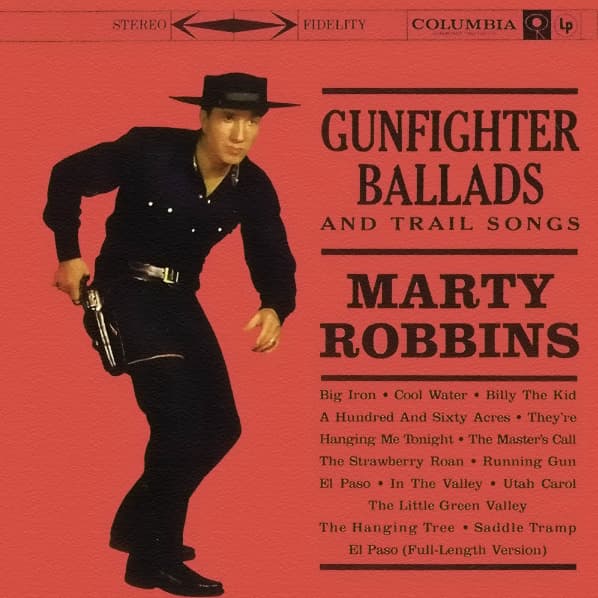
Marty Robbins – The Ballad of a Gunfighter: A Melancholic Tale of the Wild West
In the annals of country and western music, few artists have captured the essence of the American frontier as evocatively as Marty Robbins. His song, “The Ballad of a Gunfighter,” is a poignant reminder of a time when life was raw, and destinies were carved by the aim of a gun and the whisper of legends carried by the wind. Released in the early 1960s, this track stands as a testament to Robbins’ ability to weave stories that are as vivid and enduring as the landscapes he sings about.
Upon its release, “The Ballad of a Gunfighter” was not just another entry into Robbins’ already impressive discography but a narrative jewel that resonated deeply with audiences. Although it might not have soared to the very top of the charts like some of his other hits, its impact was undeniable among his fans and lovers of Western ballads. The song’s placement in the charts is less a reflection of its quality and more a testament to an era teeming with musical giants. However, it remains a cherished piece for those who appreciate storytelling set to music—a Robbins specialty.
The story behind this evocative ballad is as compelling as its melody. Set against the backdrop of the untamed West, it tells the tale of a lone gunslinger, a figure both feared and revered. Through his lyrics, Robbins paints a vivid picture of dusty trails and high-noon duels, capturing the dichotomy between violence and honor that defined the era. The song’s protagonist is caught in an eternal struggle for survival and redemption, reflecting broader themes of human conflict and existential contemplation.
Robbins himself was no stranger to these themes. Born in Arizona, his roots were deeply entwined with the lore of cowboys and outlaws. This connection lent authenticity to his music, allowing listeners to almost smell the gunpowder and feel the desert sun on their skin. His voice—rich, emotive, yet tinged with an undercurrent of melancholy—brings life to characters who might otherwise have been lost to history.
The ballad also speaks volumes about Robbins’ songwriting prowess. Each verse is meticulously crafted, offering glimpses into moments fraught with tension and introspection. His use of language is both poetic and accessible, inviting listeners from all walks of life to step into a world where every decision could be one’s last. This ability to transport audiences through song is perhaps why Robbins’ work continues to resonate, particularly with older generations who remember or long for tales from simpler times.
Listening to “The Ballad of a Gunfighter” today evokes nostalgia—a bittersweet reminder of youthful days spent watching Westerns on black-and-white televisions or hearing stories from elders who lived through similar times. It taps into our collective memory, stirring emotions that lie dormant until awakened by such timeless tunes.
In conclusion, while “The Ballad of a Gunfighter” may not have claimed top chart positions during its debut, its legacy endures far beyond numbers. For those who cherish narratives rich in history and emotion, Marty Robbins offers an unforgettable journey back in time—a journey where one can almost hear the echoing hoofbeats and distant whistle of a train bound for unknown horizons.